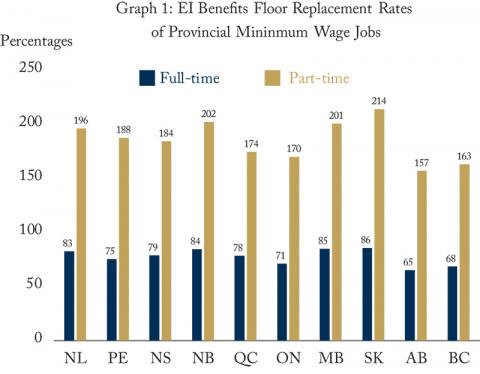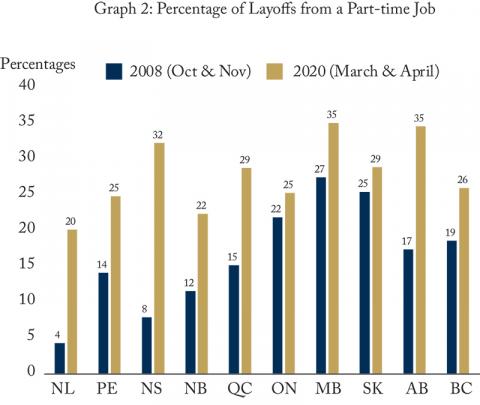From: Stéphanie Lluis
To: Canadians Concerned about the State of the Labour Market
Date: September 17, 2020
Re: Consequences of the high EI benefits floor
Last month, the government announced new temporary emergency measures – the Canada Recovery Benefit, the Canada Recovery Sickness Benefit and the Canada Recovery Caregiving Benefit – following the end of CERB to extend income support to individuals whose employment and/or income has been affected by the health crisis.
These temporary measures are targeted to specific groups otherwise ineligible for EI benefits. These emergency programs will start on Sept. 27 and remain in force for one year to support Canadians through the next phase of the economy re-opening and clearer paths to the job market.
Another temporary change is the introduction of a benefit floor equal to $400 of weekly EI benefits. Unlike the three measures above, this change applies to all current and potential EI recipients during the upcoming year, which raises interesting issues in the short-run and potentially in the long-run.
Income from the new EI benefits floor implies replacement rates of 190-200 percent of the average earnings of the part-timers laid off in March and April as a result of the lockdown.
Pre-pandemic, the EI system did not define a benefits floor. For the sake of comparison, one could estimate minimum benefits by applying the 55 percent replacement rate to a minimum wage job; assuming a full-time-full-year minimum wage job, the weekly benefits could vary between $257 in Saskatchewan and $338 in Alberta depending on the minimum wage rate of the province. The benefits floor of $400 now implies replacement rates between 65% and 86% for full-time workers as illustrated in Graph 1. When separating full time from part-time work with average usual hours around 17 hours per week for most provinces, the replacement rates more than double. Therefore, while the benefits floor is lower than CERB’s $500 in weekly benefits and less likely to compete with full-time minimum wage jobs, it has been set at a level that replaces 190-200 percent of the income of a part-time minimum wage job (between $187 and $255 based on the minimum wage rate and average part-time hours of the province).
A large proportion of the COVID-19 induced layoffs in March and April were drawn from the bottom of the earnings distribution. Labour Force Survey numbers show that between 20 and 35 percent of the 2.1 million workers laid off in March and April 2020 were working in part-time jobs (Graph 2). There is some variation between provinces, but the Graph shows that the current health crisis has hit part-timers much harder than during the 2008-09 recession from the financial crisis.
The key takeaway is that the changes to EI have created the strongest disincentive to return to work this autumn for the types of workers most likely to have lost their job during the pandemic.
In tomorrow’s Memo, we’ll address the potential consequences of this disincentive to take on part-time work.
Stéphanie Lluis is associate professor of economics at the University of Waterloo.
To send a comment or leave feedback, email us at blog@cdhowe.org.
The views expressed here are those of the author. The C.D. Howe Institute does not take corporate positions on policy matters.
Notes: Based on the PUMFS of the LFS for the year 2019. Full-time (part-time) weekly earnings are based on average usual hours worked in full-time (part-time) employment in the province.
Notes: Based on PUMFS of the LFS using the months of March and April of 2020 at the peak of COVID-19 layoffs and months at the start of the 2008-2009 recession.







